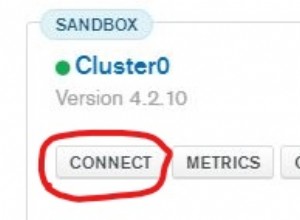Respuesta actualizada
Hackeados juntos en el shell mongo:
use pagestats;
// a little helper function
var pagePerHour = function(pagename) {
d = new Date();
return {
page : pagename,
year: d.getUTCFullYear(),
month: d.getUTCMonth(),
day : d.getUTCDate(),
hour: d.getUTCHours(),
}
}
// a pageview happened
db.pagestats.update(
pagePerHour('Hello'),
{ $inc : { views : 1 }},
true ); //we want to upsert
// somebody tweeted our page twice!
db.pagestats.update(
pagePerHour('Hello'),
{ $inc : { tweets : 2 }},
true ); //we want to upsert
db.pagestats.find();
// { "_id" : ObjectId("4dafe88a02662f38b4a20193"),
// "year" : 2011, "day" : 21, "hour" : 8, "month" : 3,
// "page" : "Hello",
// "tweets" : 2, "views" : 1 }
// 24 hour summary 'Hello' on 2011-4-21
for(i = 0; i < 24; i++) {
//careful: days (1-31), month (0-11) and hours (0-23)
stats = db.pagestats.findOne({ page: 'Hello', year: 2011, month: 3, day : 21, hour : i})
if(stats) {
print(i + ': ' + stats.views + ' views')
} else {
print(i + ': no hits')
};
}
Dependiendo de los aspectos que desee rastrear, puede considerar agregar más colecciones (por ejemplo, una colección para el seguimiento centrado en el usuario). Espero que ayude.
Ver también
Blogpost sobre datos analíticos




